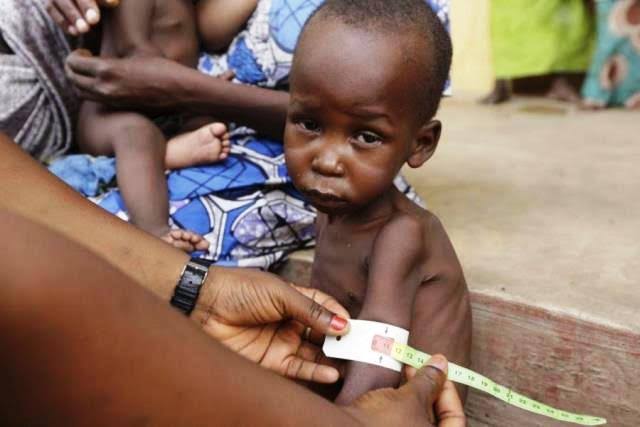
A joint report by UNICEF, the World Health Organisation, and the World Bank has revealed a concerning increase in child stunting across Africa.
According to the findings, Africa is the only region where the number of stunted children has risen since 2012, growing from 61.7 million to 64.8 million—despite global progress in tackling child undernutrition.
Stunting, described as low height for age, results from poor nutrition, frequent infections, and lack of proper care and stimulation during early childhood.
The Joint Malnutrition Estimates 2025 Edition, which covers data from 2000 to 2024, was released on Thursday. It emphasised that proper nutrition is essential to a child’s survival, healthy development, learning capacity, and ability to participate meaningfully in society.
However, malnutrition remains a major obstacle, cutting short children’s potential before it has a chance to unfold.
The joint report paints a grim picture—despite decades of progress, child malnutrition still impacts millions globally.
According to the latest figures, 150.2 million children under five are stunted, 42.8 million suffer from wasting (including 12.2 million with severe wasting), and 35.5 million are overweight.
“Recent trends signal a worrying halt in stunting reduction, continued high levels of wasting, and unchanged rates of overweight among children under 5 years old globally. Less than one-third of countries are on track to meet 2030 stunting targets, while just 17 per cent are progressing toward overweight reduction goals.
“Asia bears over half of all children with stunting (51 per cent), while Africa accounts for 43 per cent. Most concerning: Africa is the only region where the number of children affected by stunting has increased since 2012, rising from 61.7 million to 64.8 million children.”
The report emphasised that stunting affects not only a child’s physical growth but also brain development and future earning potential, while wasting poses an immediate threat to a child’s survival. Without urgent intervention, the potential of an entire generation could be lost.
It also highlighted persistent data gaps that hinder accurate tracking of progress, particularly in addressing wasting. Combating child malnutrition requires intensified, long-term efforts across multiple sectors, supported by reliable and timely data.
According to the report, progress remains insufficient to meet the 2025 World Health Assembly global nutrition targets and the Sustainable Development Goal (SDG) 2.2, which aims to improve nutrition for mothers, infants, and young children.
“Just over one quarter of all countries (28 per cent) are ‘on track’ to halve the number of children affected by stunting by 2030, and assessment of progress to date is not possible for 20 per cent of countries. Even fewer countries are expected to achieve the 2030 target of three per cent prevalence for overweight, with just 17 per cent of countries currently ‘on track’.
“Further, an assessment of progress towards the wasting target is not possible for over one-third of all countries.
“More intensive efforts are needed for the world to achieve the global targets for stunting, wasting, and child overweight by 2030. Gaps in the availability of data in some regions make it challenging to accurately assess progress towards global targets. Regular data collection is critical for monitoring and reporting on country, regional, and global progress on child malnutrition,” it added.
